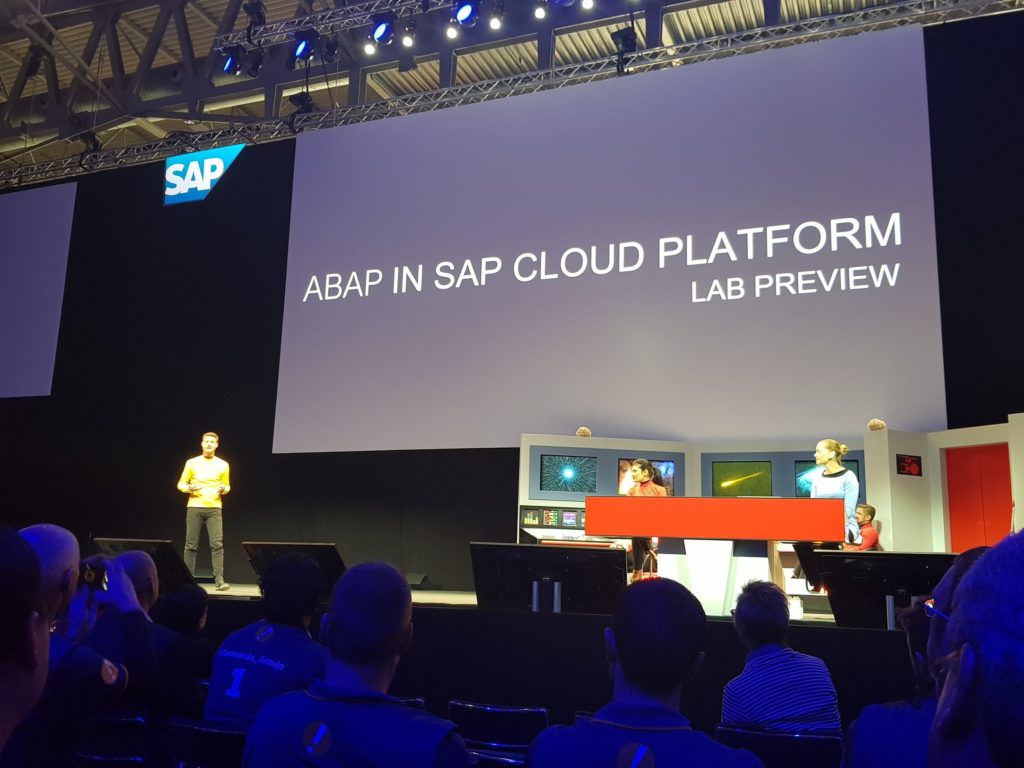
SAP TechEd season is just over, and this year there was an important announcement from Björn Goerke, Chief Technology Officer of SAP, at three locations, Las Vegas, Bangalore, and Barcelona:
“ABAP in SAP Cloud Platform”
I was lucky to listen to this announcement from Björn Goerke at TechEd Barcelona and also I had a chance to get additional details and discuss this news with other developers during the conference. It seems to be an announcement of just another runtime environment on SAP Cloud Platform, but it has much more value for customers, partners, and ABAP developers. ABAP is a programming language that is primarily used to develop business applications and it has always had some limitations compared to other programming languages like Java, etc. However, running ABAP on SAP Cloud Platform is a new era for the ABAP world. Let’s refresh our memories with some historical information about the ecosystem to understand this new milestone better.
In the past, we’ve seen rumors spreading between ABAP developers several times, that the core development of SAP is moving away from ABAP towards the other programming languages, ABAP is losing its popularity and they will have to learn new programming languages to be able to survive in the SAP world as a developer.
I remember having this discussion first during the release of Java Engine, which was seen as a complementary platform to ABAP Engine. ABAP was lacking some features and Java has been a life vest, especially for web and integration scenarios. A large number of ABAP developers started to learn Web Dynpro Java during this time but it didn’t take too long that we have seen Web Dynpro ABAP as an alternative development tool to Web Dynpro Java.
Similar discussions are also taking place recently after SAP started to build a new user experience strategy with Fiori. I have been asked many times by ABAP developers if the Fiori/SAPUI5 development will replace the ABAP development or not. If we look into the technical details of Fiori development architecture, we can easily see that it doesn’t change anything in the main core, and even with SAP Gateway and CDS technology, ABAP is becoming a very important part of Fiori developments. SAP Fiori Elements is also another example that helps us to develop annotation-based Fiori UI with minimum SAPUI5 development by keeping more development effort on the ABAP side.
SAP Cloud Platform was the most current threat to the ABAP language. Cloud computing is on the rise for a while. Additionally, more and more enterprises are moving to the public, private or hybrid cloud. SAP has also started to build its cloud strategy with SAP Cloud Platform. SAP has become a key member and contributor to Cloud Foundry and incorporated it into the SAP Cloud Platform to deliver an open and flexible platform for cloud applications. Acquisitions of SuccessFactors and Ariba were serious steps to becoming a cloud company, but there is no doubt that SAP S/4HANA Cloud is the most important milestone of this transition.
This year, the S/4HANA Cloud version is released two years after the initial launch of S/4HANA on-premise. Today, SAP customers can move their core business processes to the cloud completely and benefit from the latest innovations delivered with S/4HANA without any maintenance effort. This sounded great to the customers at first but when they started to prepare a feasibility study, they realized the huge gap on the table: How they can transform the tons of custom ABAP codes developed in their existing on-premise systems?
Besides S/4HANA Cloud, there are also other products in the SAP’s cloud portfolio. Examples include Integrated Business Planning, Hybris Marketing Cloud, and Business By Design that will require an extension and custom coding on the cloud. There must be also a mechanism to protect the existing investments of the ecosystem on the ABAP technology and help them to use it on the cloud too.
SAP has listened to the customers, partners, and developers. Finally, they have announced the lab preview of the ABAP runtime in SAP Cloud Platform. Although it will be identical to the ABAP language that we know, we will have some limitations. Here is the summary of the technical details that I was able to get during the TechEd Barcelona:
- There will not be SE80, only Eclipse will be available as IDE
- SAP GUI access will not be available
- Data access will be done using CDS views
- SAP Web IDE and Fiori will be used for UI
- Only PDF-based printing will be available
- Direct access to SAP tables will not be possible since the ABAP runtime will not be on the same stack with the cloud application
- The whitelisting approach will be used. We will be able to use only the released API’s
- Deprecated ABAP statements will not be available on the cloud
It is planned to be generally available in 2018. However, customers can apply for a beta program for early access to the exciting world of ABAP on the cloud. It will start with S/4HANA Cloud and extend to the other cloud solutions afterward. Partners will be able to develop add-ons and extensions on the cloud. Further, they will be able to commercialize their product as a SaaS solution, probably not earlier than 2019.
One of the key benefits of running it on the cloud is direct access to the SAP Cloud Platform capabilities like Machine Learning, IOT, and Blockchain.
It is great to see that SAP is always protecting the existing ABAP community and continuously improving language with new features and innovations. I’m very excited and looking forward to getting my hands dirty with ABAP on the SAP Cloud Platform.
If you are interested in viewing similar articles, visit our blog, here.
View our LinkedIn, here.